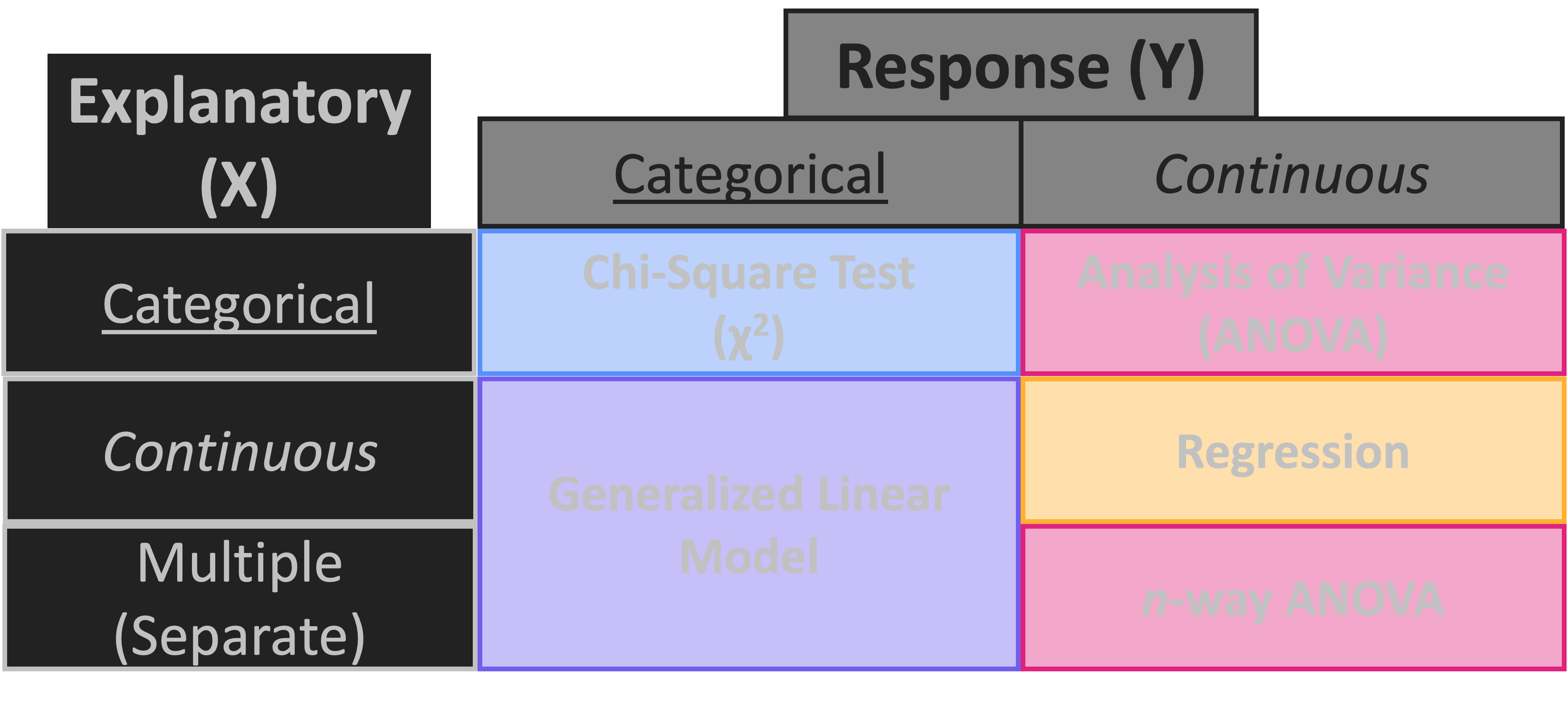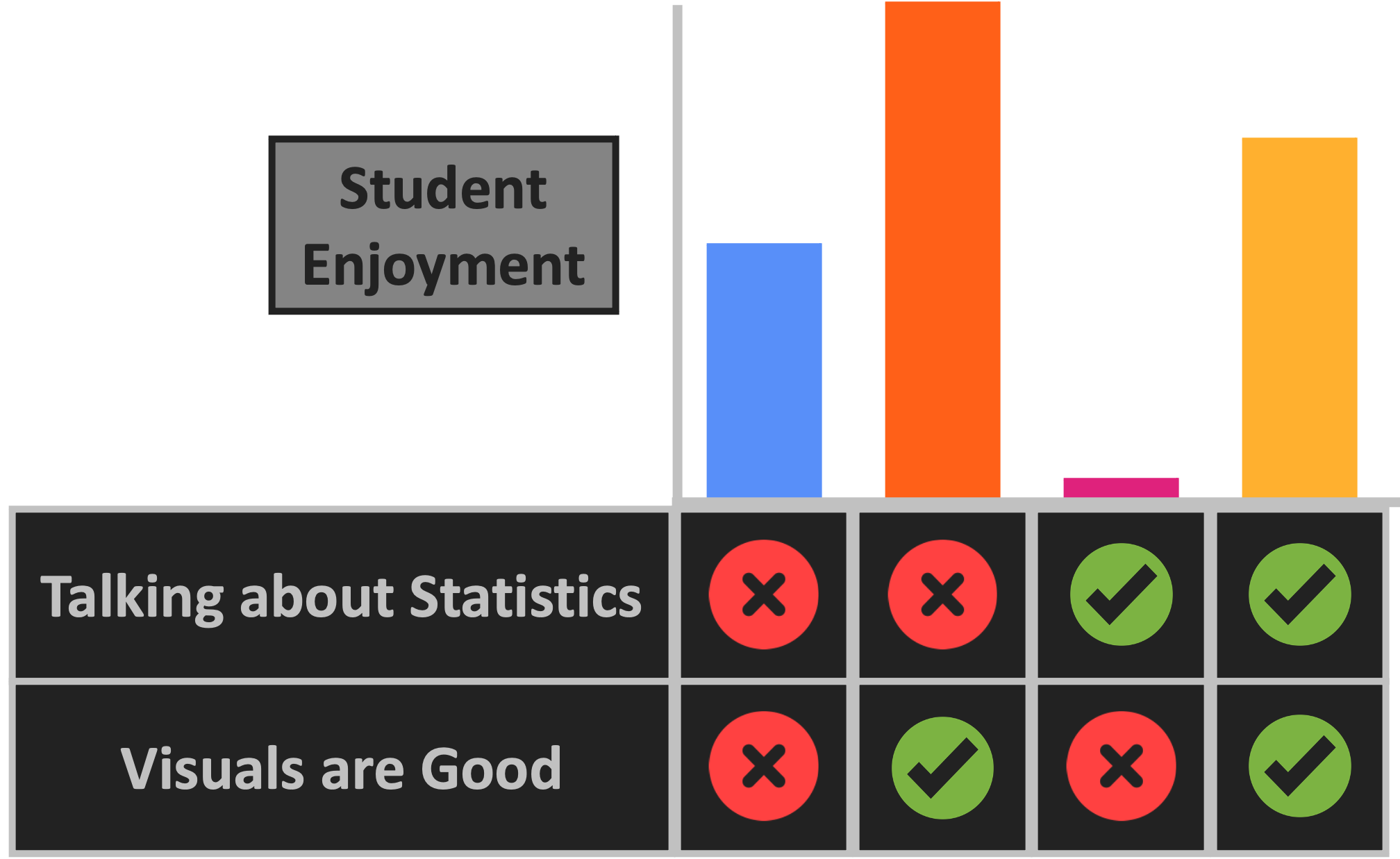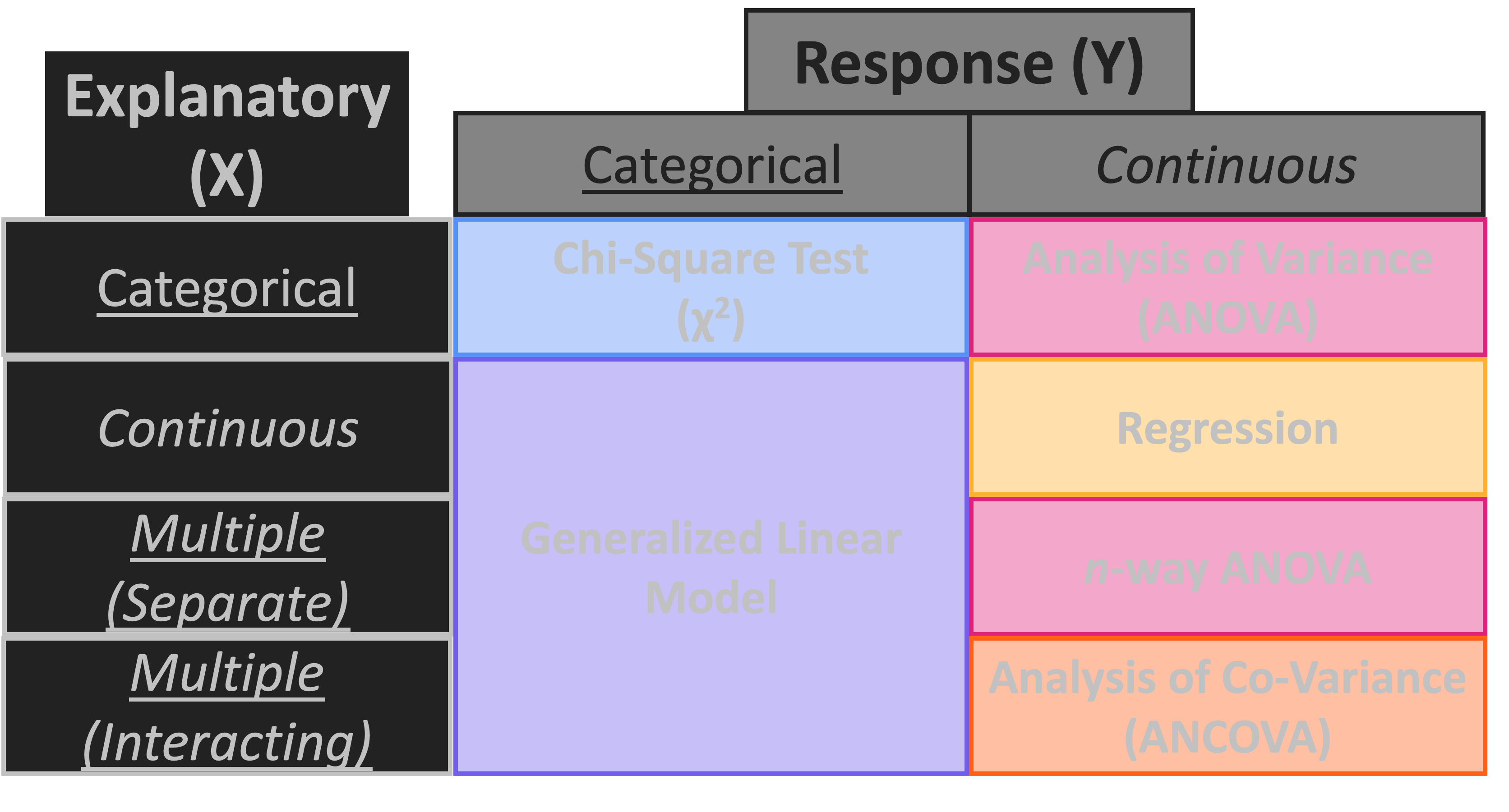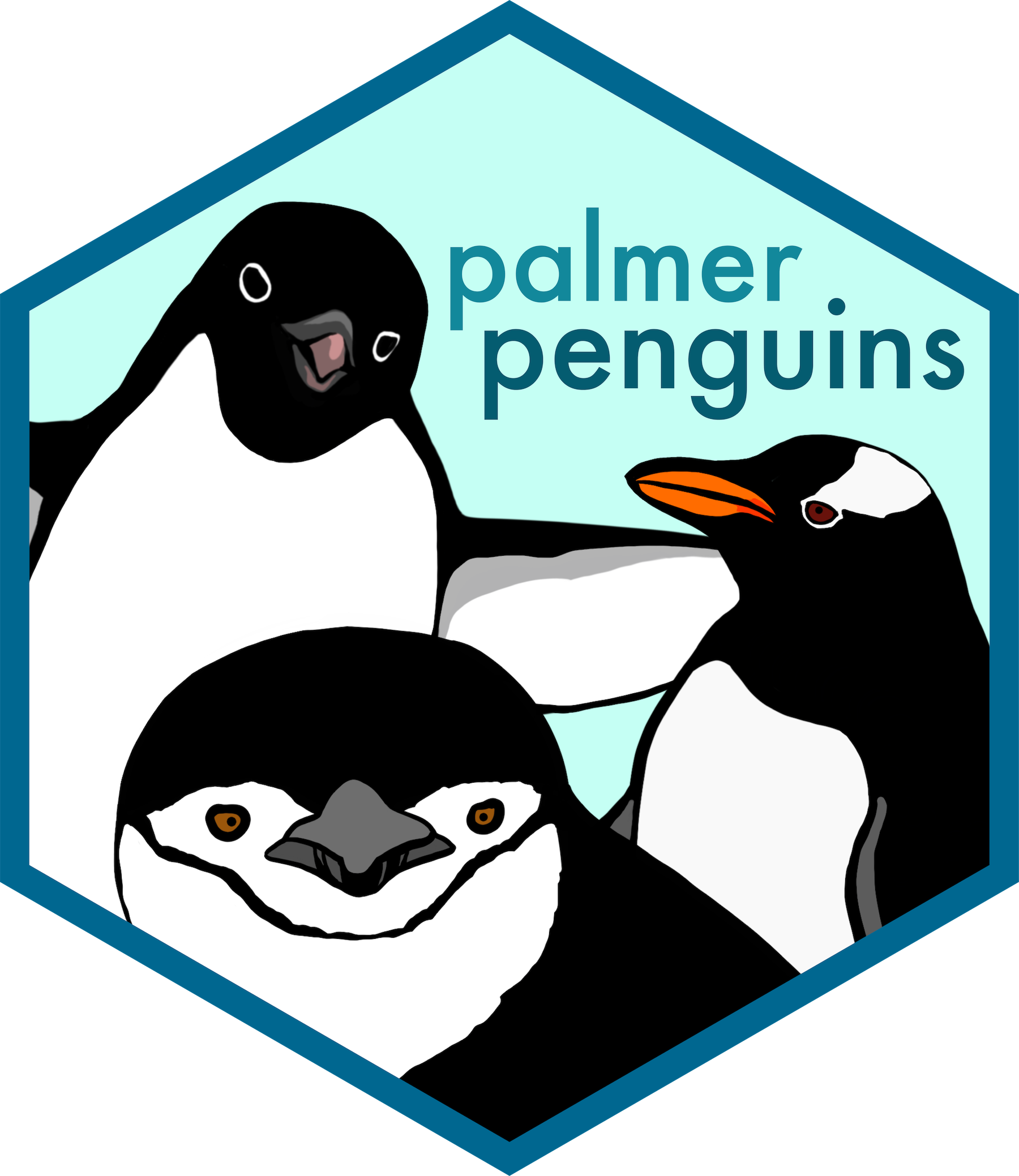Intro to Data Science
Lecture 5 – Multi-Model Inference
A Guide to Your Process
Scheduling
Learning Objectives
Practice
Supporting Information
Class Discussion
Today’s Plan
- Interactions
- Multi-Model Inference
- Mid-Term Instructor Evaluations
- Free Work on Function Tutorials
Today’s Learning Objectives
After today’s session you will be able to:
- Perform more analytical tests using R
- Explain an “interaction term” in the context of life sciences
- Compare model strengths in R
Roadmap Reminder

Interaction Terms
- So far, we’ve assumed the effect on Y is due to each X separately
- In real life, the effect on Y may be due to interactions among X variables!
- Arguably, all of biology lives in these interactions!
Interactions Examples
- Let’s consider some examples to hopefully make this “click” for you
- The number of ant hills (Y) depends on both how hot it is (X) and how rainy it is (X)
- Raccoons are fatter (Y) when they live close to humans (X) and the weather is mild (X)
Interaction Visual
- One more example:
- Students enjoy (Y) talking about stats (X) if there are good visuals (X)

Roadmap Extension: Interactions

R Syntax for Interactions
- Two ways to add additional an interaction between two explanatory variables:
- Use an asterisk (
*) between the two terms - Use a colon (
:)
- Use an asterisk (
- Using an asterisk includes both terms separately and their interaction
Analysis of Co-Variance (ANCOVA)
- Multiple X variables and Y is continuous
- X variables may be either categorical or continuous
- Must also include an “interaction term” between (at least) two of the X variables
- Hypothesis: The effect on Y is due to the interaction of X variables
- H0: The effect on Y is not due to interactions among X variables
- Returns a P value for the interaction term and each X variable separately
Practice: ANCOVA

- ANCOVA function is the same as the regular ANOVA / n-way ANOVA –
aov
- New penguin-related hypothesis:
- HA: Penguin body mass differs among species and within a species between sexes
- H0: Sex-specific differences on penguin body mass are not species-dependent
- Test HA with an interaction term!
- Was your hypothesis supported?
- What difference(s) do you see between this and a 2-way ANOVA summary table?
Temperature Check
How are you Feeling?

Discussion: Null Hypothesis Testing
- What lingering questions do you have on this topic?
- Is the “roadmap” helpful?
- How can I change it to more helpful (for future cohorts of students)?
Multi-Model Inference (MMI)
- MMI is an alternative to null hypothesis testing
- P < 0.05 is an arbitrary cutoff!
- Instead, we can make several “candidate models”
- Basically several alternate hypotheses (HA)
- Fit data to all candidate models (separately) and compare strength of fit
- Candidate hypothesis with the strongest relationship to data is supported
“Model Strengths”
- ‘Relative model strengths’ is very different from P values
- Still all about hypothesis testing though!
- P values ask “does this affect things more than if nothing is happening?”
- MMI asks “does this affect things more than other variables/combinations of variables?”
- Model strength evaluated with an information criterion
- Way of summarizing each candidate model to decide the ‘winner(s)’
Information Criteria
- Most often: Akaike Information Criterion (AIC)
- [Ah-kuh-EE-kay]
- Lowest information criterion is best model
- BUT models with <2 AIC points difference are basically the same strength of fit
- Another arbitrary threshold!
AIC Function
- AIC function is just a list of all your models
- Function is–helpfully–
AIC
- Function is–helpfully–
- Fit models using whichever stats test is appropriate
- Then compare AIC scores for each model
Practice: MMI

- Fit the following four candidate models using the most appropriate test for each
- HA: Penguin body mass differs among species
- HA: Penguin body mass differs between sexes
- HA: Penguin body mass differs among species and between sexes
- HA: Penguin body mass differences between sexes depend on the species
- Which model best fits the data?
- I.e., AIC is lowest
- What is the next best model?
Temperature Check
How are you Feeling?

Instructor Evaluations
- Today is the first day of the second half of the course!
- I hope you all are having a fun time
- Hopefully not ironic to say that after two days of stats
- Would really appreciate you filling out an anonymous evaluation for me!
- What am I doing well?
- What could I improve on for the rest of the course?
- Any other feedback you’d like to share?
Upcoming Due Dates
Due before lab
(By midnight)
- Muddiest Point #5
- Draft 1 of Function Tutorials
- Double check rubric to see that you’re not leaving any points on the table!
Due before lecture
(By midnight)
- Homework #5
Free Work on Function Tutorials
- Draft 1 is due tomorrow night at midnight!
- Tips for success:
- Check out the rubric and make sure you don’t miss any “easy” points
- Don’t leave after this slide!
- I.e., make good use of this free work time to make sure you’re looking good for that due date
- If you have questions, ask them now during this free work time